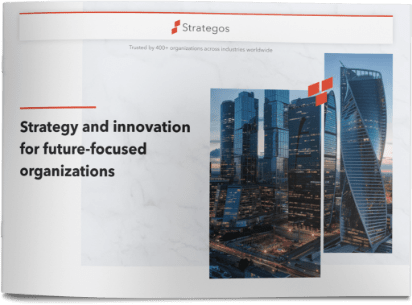I have a sneaking suspicion that the title of this blog entry may come as a somewhat of a surprise to our readers who know Strategos’ pioneering commitment to the practice of involving large numbers of employees in innovation.
Well, fear not! Our clients still engage what we refer to as “diagonal slices” of employees from across all functions, geographies, and business units to create winning strategies and successful new businesses. We regularly assist clients in implementing idea markets – virtual “stock exchanges” in which the voice of the crowd proposes and values new ideas for consideration. This is front-line engagement at its most direct – often inviting all employees to contribute their ideas and to help improve the ideas offered by others.
So why the downbeat tag line? The problem is that many companies make crucial errors in the ways that they try to tap the collective wisdom of their teams. Let’s take a look at a few of the leading problems:
If we’ve said it once, we’ve said it a thousand times: innovation is not a free-for-all! Discipline matters – if we ask employees to toss whatever ideas they have into a virtual suggestion box, the results will be both more diffuse and less inspiring than if we target employees’ thinking on clear and important challenges. “How can we work with farmers to decrease herd mortality?” is a bit better than “How can we increase sales to farmers” or “your ideas matter!”
Supply without demand or a path to action – Let’s say that I asked you to think hard about a challenge and give me your best idea, and then told you some time later that I had no resources to implement it, no sponsors to steward it, and no process to track whether it lived or died. You’d feel great, right? Not really – yet the sea of idea markets, challenge contests, and innovation jams out there that lead directly into blind alleys from which ideas never emerge suggests that managers see these point solutions as the be-all and end-all of innovation, which they are not. As in all markets, stimulating supply (in this case, of ideas) without creating demand and a path to market leads to a devaluation of the commodity in question – and a bunch of disheartened employees in the bargain.
Improper expectations – While it’s not impossible, the fantasy outcome of a broad solicitation of ideas – a wealth of wonderful, defensible, and new to the world disruptive business models – very rarely happens. Just today, we visited with a company that has had a series of all-employee innovation challenges in place for about three years now. Recently, they looked back at the types of ideas generated, and here’s what they found: 41 percent of the suggestions were for incremental improvements in internal operations, 33 percent for minor feature changes to existing products, a full 25 percent irrelevant to the scope of their business – and only one percent suggesting entirely new products or services. The interesting thing is that even with good aiming and provocative stimuli for thought on the part of the participants, this outcome is about what you should expect! There are other approaches, including intensive work by small, diverse teams using multiple perspectives, that often yield radical business ideas and strategies – but as a general rule, mass involvement tools don’t yield these outcomes.
Feeling good feels good. This is the fallacy that suggests that if we “build energy” and “make employees feel involved” somehow our business will harvest lots and lots
of value. Self-actualization is great, but if after a bit employees and executives get the sense that it isn’t making anything happen for the company or the employees, at the end of the day everyone will feel worse than when they started. So, what can you do?
In a few words:
- Use the right tool for the right job – broad engagement for lots of small, practical ideas, and focused team work for big game-changing ones.
- If you do use broad engagement tools, surround them with the other things that they require in order to work – senior sponsorship of ideas, clear paths to implementation, and the metrics and dashboards to stimulate demand and track progress.
- Focus and win – creativity within constraints works better than total freedom – and provides important signals to the troops about what’s important in our business right now.
- Pay attention to both the rational and emotional elements of employee engagement – neither hoopla alone or cold-blooded business focus alone will win the day, but if you can hit the sweet spot where enthusiasm and a true willingness to listen meet a practical, nuts and bolts ability to make employees’ ideas real, you’ll all be smiling when the work is done.
Gary Getz, CEO Strategos





